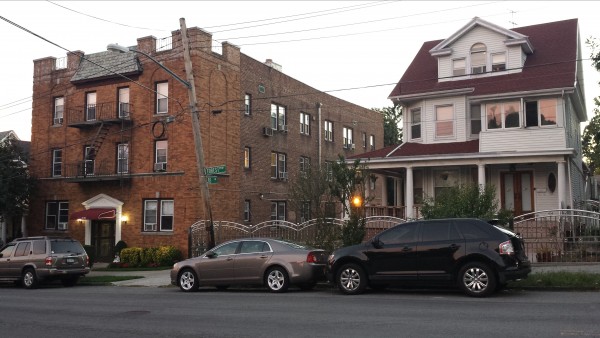
Some Woodhaven residents are still concerned about parts of the mayor’s affordable housing plan.
Photo by Michael V. Cusenza
Perhaps the most ambitious project of his mayoralty, Hizzoner Bill de Blasio’s 10-year, five-borough affordable housing plan is not without its critics.
Just ask some residents of Woodhaven.
“It’s a cheap way for the city to provide ‘affordable housing,’” said Sherman Kane at last Thursday’s meeting of the Woodhaven Residents’ Block Association. “It costs the city nothing. We, as middle-class homeowners, would be providing the solution.”
In late July, the WRBA reached out to the mayor’s office via a letter expressing their concerns and requesting more information, and has even circulated a petition decrying the $41 billion project. The civic has not received a response.
“We just wanted to be more educated on what [de Blasio] is trying to do,” said WRBA President Martin Colberg last week.
Colberg noted that one of the main concerns is zoning, and how the plan will involve green-lighting basement and attic apartments. Published reports indicate that de Blasio is keen on converting previously illegal basement and cellar dwellings.
“We worked hard to keep the zoning the way it is, to keep the character the way it is,” he said. “Just shoving people into a basement or attic is not the answer.”
De Blasio unveiled the 200,000-unit plan—the most expansive in the nation’s history—barely four months into his first term. It outlines more than 50 initiatives that will accelerate affordable construction, protect tenants and deliver more value from affordable housing investments, including: Implementing mandatory inclusionary zoning; increasing the number of homes for the lowest income New Yorkers; launching a new affordable housing program for middle-income New Yorkers; doubling the Department of Housing Preservation and Development’s capital funding for affordable housing; spurring development of small, vacant sites; stemming the tide of rent deregulation and protecting tenants; expanding affordable and supportive housing for seniors; offering energy efficiency retrofits in exchange for long-term affordability; and creating new strategies to prevent and reduce homelessness, and develop additional supportive housing.
“We have a crisis of affordability on our hands,” de Blasio said. “It touches everyone from the bottom of the economic ladder, all the way up to the middle class. And so we are marshaling every corner of government and the private sector in an unprecedented response. This plan thinks big—because it has to. The changes we are setting in motion today will reach a half-million New Yorkers, in every community, and from every walk of life. They will make our families and our city stronger.”
Colberg said the mayor’s sweeping response cannot come at the expense of a community’s character and the lives therein.
“We’re talking about safety—of the NYPD, of the FDNY, if they have to go into the [converted] house, the safety of neighbors,” Colberg posited. “Whether you’re a renter or a homeowner, you’re going to be affected by this.”
By Michael V. Cusenza
